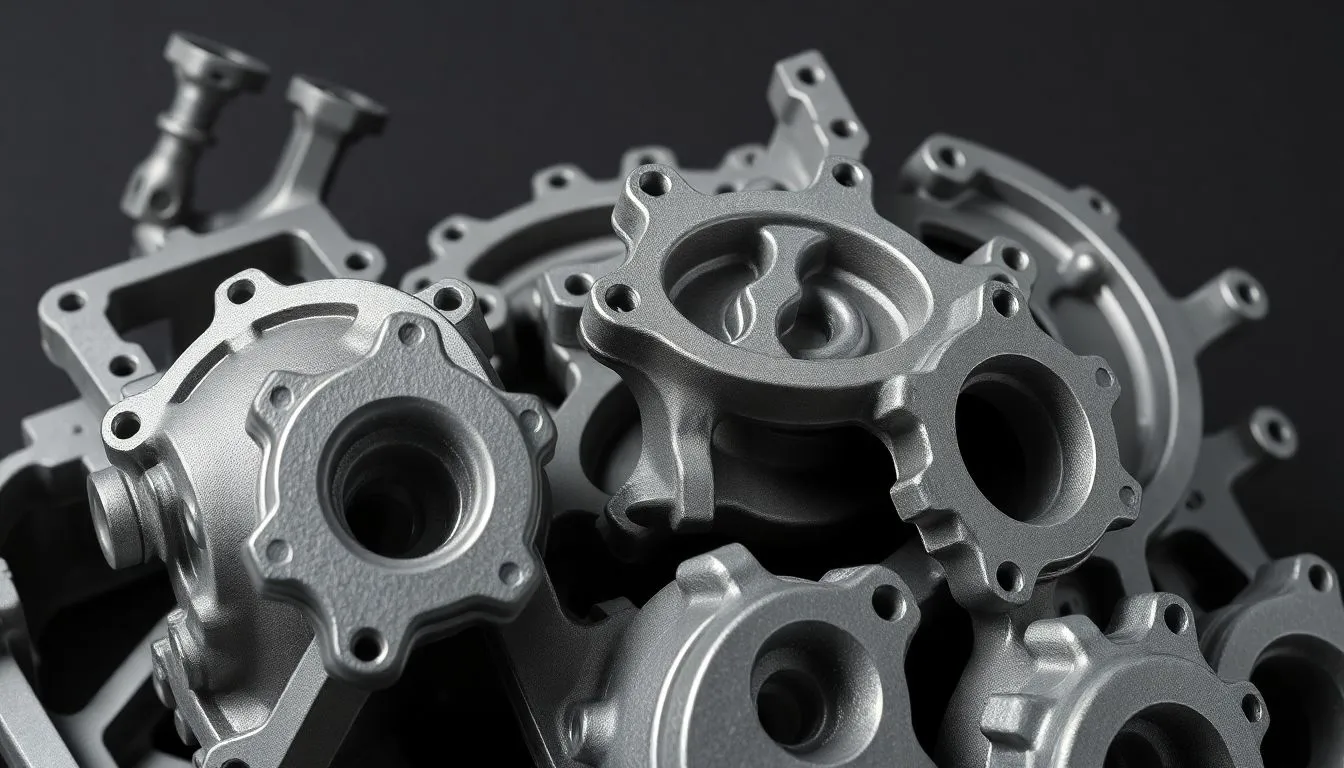In the last few years, the electric vehicle (EV) market exploded. As more people switch to EVs, manufacturers are under pressure to produce parts quickly and efficiently. Electric vehicle casting parts have emerged as a game-changing technique in this new world of manufacturing. This approach is making waves for its speed, cost savings, and environmental benefits. Let’s explore what’s happening in the EV casting landscape.
The Electrifying Shift Towards Casting: Why Now?
Growing Demand for EVs and its Impact on Manufacturing
The rise in electric vehicle sales is incredible. In the U.S., the share of electric cars sold reached 8% in 2022, a significant jump from previous years. This shift fuels a need for manufacturers to adapt. Traditional methods can’t meet the speed and volume needed. Casting provides a way to keep up with increasing demand.
Cost-Effectiveness of Casting vs. Traditional Manufacturing
Casting methods often beat traditional manufacturing in terms of cost. They allow for:
This makes casting a wise choice for EV manufacturers looking to maximize profits.
Environmental Benefits of Casting in EV Production
Speaking of costs, environmental considerations are crucial. Casting methods generally use fewer resources than traditional methods. By reducing the need for multiple manufacturing steps, companies can lower their carbon footprints. Transitioning to casting helps the industry align with sustainability goals.
Types of Casting Processes for Electric Vehicle Components
Different casting processes serve unique needs in EV production.
Die Casting: High-Volume Production of EV Parts
Die casting is perfect for making high quantities of small, complex parts quickly. This method ensures the parts have a smooth finish, reducing the need for extra machining.
Investment Casting: Precision and Complexity in EV Components
For more intricate designs, investment casting shines. It supports shaping parts that require high precision, making it ideal for vital components like gear housings.
Sand Casting: Cost-Effective Solution for Large EV Parts
When it comes to larger parts, sand casting offers an economical choice. It allows for flexibility in size and design. However, the surface finish might require additional work.
Key Materials Used in EV Casting: Alloys and Beyond
Material selection is vital in casting, especially for electric vehicles.
Aluminum Alloys: Lightweight and High-Strength Solutions for EVs
Aluminum is a top choice for EV parts due to its lightweight and high strength. It plays a crucial role in extending battery range and improving efficiency.
Magnesium Alloys: Ultra-Lightweight Options for Enhanced Efficiency
Magnesium alloys are even lighter than aluminum. They enhance efficiency, which directly impacts vehicle performance. The goal is always to reduce weight while maintaining strength.
Steel Castings: Durability and Cost-Effectiveness in EV Chassis
Steel castings still hold a place in manufacturing. They provide durability and cost benefits for chassis components, ensuring vehicles are safe and robust.
Design Considerations and Challenges in EV Casting
Casting offers many benefits, but some challenges come with it.
Optimizing Designs for Castability and Strength
Designing for casting requires significant thought. Engineers must ensure parts can be cast easily while still maintaining the necessary strength. It’s about balance.
Ensuring Dimensional Accuracy and Surface Finish
Precision is everything. Manufacturers must keep tight tolerances to meet performance standards. Achieving a good surface finish can also be tricky, depending on the casting method.
Addressing Potential Defects in the Casting Process
Defects like porosity or misalignment can occur. Identifying and correcting these issues early saves time and costly reworks.
Quality Control and Testing in EV Casting
Maintaining quality is essential in casting processes.
Implementing Robust Quality Control Measures
Companies should establish strict quality control to ensure parts meet specifications. Regular checks throughout production help catch any issues early.
Non-Destructive Testing Methods for EV Castings
Non-destructive testing allows manufacturers to assess parts without causing damage. Techniques like ultrasonic testing can identify defects that aren’t visible to the naked eye.
Ensuring Compliance with Industry Standards and Regulations
Meeting industry standards is non-negotiable. Compliance ensures safety and reliability, both critical for EV components.
The Future of EV Casting: Innovation and Advancements
Looking ahead, excitement is in the air as new technologies emerge.
Integration of Additive Manufacturing in EV Casting
Additive manufacturing, or 3D printing, has started to blend with traditional casting techniques. This innovation allows for even more complex designs and faster prototyping.
Advancements in Material Science for Improved Performance
New materials are on the horizon. Research into advanced alloys may lead to breakthroughs in weight reduction and increases in performance.
Sustainability Initiatives and Reduced Carbon Footprint in EV Casting
The push for greener practices isn’t going away. Manufacturers are focusing on reducing the environmental impact of the casting process, looking for ways to recycle materials and minimize waste.
Conclusion: Driving the Future of Electric Vehicle Manufacturing with Advanced Casting Technologies
The rise of electric vehicle casting parts is changing how we think about manufacturing. Casting techniques offer speed, cost savings, and environmental benefits, making them a preferred choice for many manufacturers.
Key Takeaways: Recap of Main Points and Future Outlook
The demand for EVs is skyrocketing.
Casting provides a cost-effective way to produce parts quickly.
Quality and sustainability will drive future advancements.
Call to Action: Encourage Further Research and Engagement with EV Casting
Explore the fascinating world of EV casting. Stay informed about new developments, and consider how they could impact future vehicle designs.
Predictions for the Growth of the Electric Vehicle Casting Market
Experts predict that the electric vehicle casting market will reach $4 billion by 2026. This growth reflects the continued demand for innovative, efficient manufacturing solutions in the EV space.




